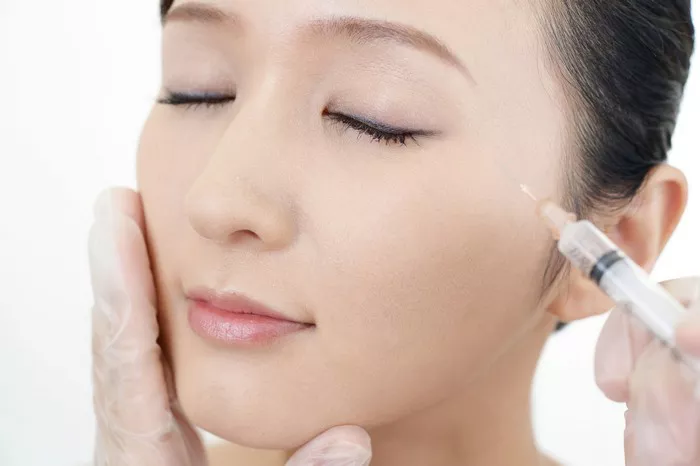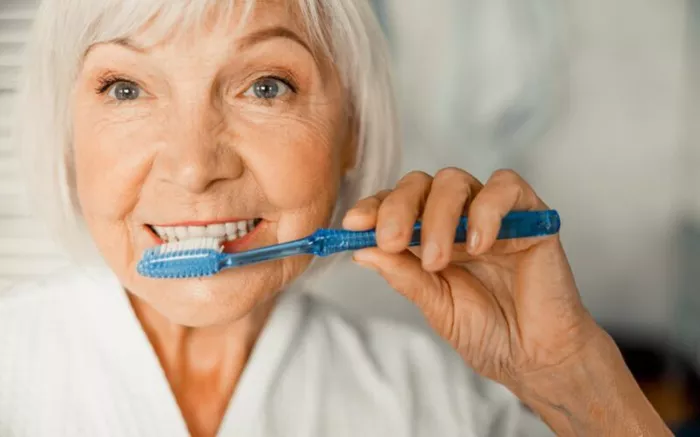Aloe vera gel has long been celebrated for its soothing and healing properties, often used to treat a variety of skin conditions. One of the most common uses of aloe vera gel is for acne treatment and the reduction of dark spots. Acne, a condition affecting many people, can leave behind scars or dark spots on the skin, which can persist long after the acne itself has cleared up. Aloe vera’s ability to address both the inflammation associated with acne and the pigmentation left behind by dark spots makes it a popular natural remedy. But is aloe vera gel truly the most suitable option for treating acne and dark spots? This article will explore the reasons why aloe vera gel is beneficial for these skin issues and how it works to improve skin health.
Aloe vera contains a variety of compounds, including vitamins, minerals, enzymes, and amino acids, that contribute to its therapeutic effects on the skin. It has long been used in traditional medicine to treat burns, cuts, and other skin irritations, but its uses extend far beyond these. When applied to the skin, aloe vera gel works as an anti-inflammatory agent, helping to reduce redness and swelling. It also provides hydration and promotes healing, both of which are key for addressing acne and dark spots. While aloe vera is not a miracle cure, it can be a powerful ally in a skincare regimen designed to combat acne and improve the appearance of dark spots.
How Aloe Vera Gel Helps Treat Acne
Acne is a common skin condition that results from the clogging of pores, usually due to an excess of sebum (oil) production, dead skin cells, or bacteria. Aloe vera gel can help manage acne in several ways, primarily through its anti-inflammatory, antibacterial, and moisturizing properties. These actions can reduce the occurrence and severity of acne breakouts, helping the skin to heal more effectively.
Anti-inflammatory Properties
Inflammation is one of the main contributors to acne outbreaks. When the skin becomes inflamed, it can cause redness, swelling, and irritation around pimples or blemishes. Aloe vera’s natural anti-inflammatory properties help to calm the skin, reducing these symptoms. The gel contains compounds like acemannan, which are known to have anti-inflammatory effects. By applying aloe vera gel to the skin, it can help soothe irritated areas and reduce the swelling associated with acne breakouts. This soothing effect can make the skin feel more comfortable and look less inflamed, even while the acne is healing.
Antibacterial and Antiseptic Effects
Another important factor in managing acne is controlling the bacteria that can cause or exacerbate breakouts. Propionibacterium acnes (P. acnes) is the bacteria responsible for much of the inflammation associated with acne. Aloe vera has natural antibacterial and antiseptic properties that can help combat this bacteria. Studies have shown that aloe vera can inhibit the growth of certain types of bacteria, including P. acnes. By applying aloe vera gel, it is possible to reduce the amount of bacteria on the skin, potentially preventing new acne lesions from forming and helping to treat existing breakouts more effectively.
Skin Moisturization and Healing
Aloe vera gel is also a natural moisturizer, providing hydration to the skin without clogging pores. While it hydrates, it also helps to restore the skin’s natural barrier function, which is important for preventing future breakouts. Many acne treatments, such as topical retinoids or benzoyl peroxide, can dry out the skin, leaving it more vulnerable to irritation. Aloe vera gel, on the other hand, keeps the skin moisturized and balanced. Furthermore, it accelerates the healing process by promoting cell regeneration. Aloe vera helps to repair damaged skin and speed up the healing of acne wounds, reducing the risk of scarring.
Aloe Vera for Dark Spots and Hyperpigmentation
Dark spots, or hyperpigmentation, are common after acne healing, and they can be challenging to treat. These spots are caused by excess melanin production, which occurs as the skin heals from inflammation. Aloe vera gel has been shown to help lighten dark spots, making it an effective remedy for those dealing with post-acne marks. Here’s how aloe vera works to fade dark spots and improve the overall appearance of the skin.
Lightening and Skin Tone Evenness
Aloe vera contains a compound called aloin, which has been found to have skin-lightening properties. Aloin can help inhibit melanin production, leading to a more even skin tone and lighter dark spots. Regular use of aloe vera gel can gradually lighten the pigmentation left behind by acne lesions. The gel’s ability to reduce melanin production helps to even out the complexion and diminish the appearance of dark spots, making the skin look brighter and clearer. While results may not be immediate, consistent application over time can produce noticeable improvements.
Promoting Skin Regeneration
One of the reasons aloe vera is effective in treating dark spots is its ability to accelerate the skin’s natural healing process. Aloe vera stimulates the production of collagen, a protein that is essential for skin regeneration. Collagen helps to repair damaged skin cells and promote new skin growth. By encouraging the skin to regenerate, aloe vera can speed up the fading of dark spots and scars. This regenerative effect also makes aloe vera a good option for overall skin health, as it encourages the growth of healthy, fresh skin cells.
Reducing the Appearance of Scars
In addition to lightening dark spots, aloe vera gel can also help reduce the appearance of scars, including those left behind by acne. Aloe vera’s regenerative properties help to fade scars by promoting faster skin turnover. This process gradually replaces damaged tissue with new, healthy skin. Aloe vera is particularly effective for mild to moderate scarring, as it helps the skin heal without causing further irritation. Applying aloe vera gel regularly to acne scars can help soften the scars, making them less noticeable over time.
How to Use Aloe Vera Gel for Acne and Dark Spots
To get the best results from aloe vera gel, it’s important to apply it correctly. Aloe vera gel can be purchased in stores, but it’s often best to use fresh gel from an aloe vera plant, as this will contain the highest concentration of active compounds. If using store-bought gel, make sure it is pure and free from artificial fragrances or additives that can irritate the skin.
Applying Aloe Vera for Acne Treatment
To treat acne, start by cleaning the face with a gentle cleanser to remove dirt, oil, and impurities. After cleansing, apply a thin layer of aloe vera gel directly to the affected areas. Leave the gel on for at least 20 minutes to allow the skin to absorb its healing properties. You can also leave it on overnight for a more intense treatment. For persistent acne, use aloe vera gel twice a day, once in the morning and once before bed. It’s important to be consistent and patient, as it may take a few weeks to notice significant improvements.
Using Aloe Vera for Dark Spots
For dark spots, aloe vera gel can be applied in a similar way. After cleansing the skin, gently massage the gel onto the areas with hyperpigmentation, such as post-acne marks. Allow the gel to absorb into the skin and leave it on for 20 minutes or overnight. For best results, aloe vera gel should be applied consistently, at least once a day. As with acne treatment, it may take some time to see noticeable results, but with regular use, aloe vera can help fade dark spots and even out the complexion.
Combining Aloe Vera with Other Natural Remedies
While aloe vera is effective on its own, it can be combined with other natural ingredients to enhance its effects. For example, honey is another natural anti-inflammatory and antibacterial agent that can work in tandem with aloe vera to treat acne. Lemon juice, known for its brightening properties, can also be added to aloe vera gel for additional skin-lightening benefits. However, always patch test any new ingredients to avoid potential irritation.
Possible Side Effects of Aloe Vera Gel
Aloe vera gel is generally safe for most skin types, but it is always important to be mindful of potential allergic reactions. Some people may experience irritation or redness when using aloe vera, especially if they have sensitive skin. To avoid this, perform a patch test before using aloe vera gel on larger areas of the face. Apply a small amount of gel to the inside of your wrist or behind your ear and wait 24 hours to check for any adverse reactions. If no irritation occurs, aloe vera gel is typically safe to use.
In rare cases, aloe vera can cause an allergic reaction in people with certain sensitivities. If any signs of irritation, such as itching, burning, or swelling, appear, discontinue use immediately. It is also important to avoid applying aloe vera gel to broken or open wounds, as this can lead to further irritation or infection.
Conclusion
Aloe vera gel is a highly beneficial natural remedy for treating acne and dark spots. Its anti-inflammatory, antibacterial, and moisturizing properties help to reduce the occurrence of acne and promote faster healing, while its skin-lightening effects can help fade dark spots and hyperpigmentation. Aloe vera promotes skin regeneration, helping to reduce the appearance of scars and improve overall skin tone. While aloe vera is not a miracle cure, it can be an excellent addition to a skincare routine focused on improving acne and dark spots. Regular and consistent use, along with a gentle skincare regimen, can lead to clearer, healthier skin over time.
Related Topics





























